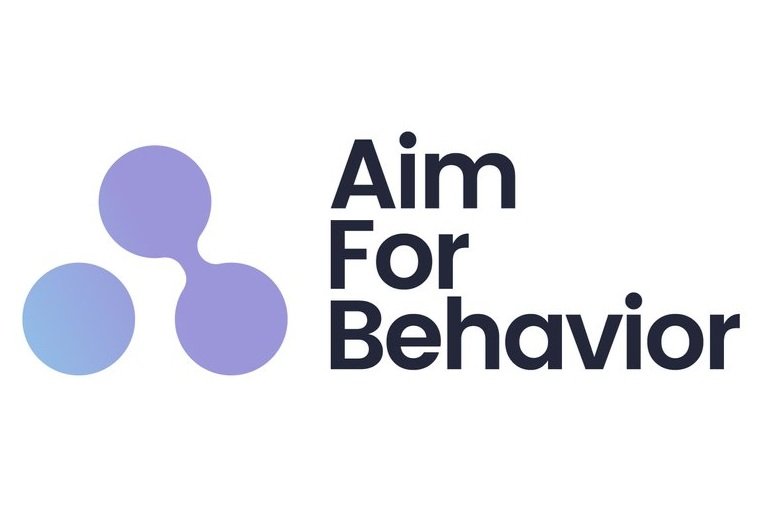Welcome to the
Behavior Design Course
Apply Behavioral Science to improve customer and employee experience
Get practical toolkit to enhance design, innovation and organizational change
Hello! I'm Robert Meza, the founder of Aim For Behavior and creator of the Behavior Design Framework.
My journey into behavioral science began with a simple curiosity: How can we better understand human behavior to improve design, innovation, and organizational change?
Today, many people associate behavioral science with cognitive biases and nudges and while these are important, they are only a small part of how you design for change.
To get better outcomes we have to be precise about defining behaviors, understanding the drivers behind actions, and translating these insights into effective design features for products, services, and experiences.
Behavioral science is a dynamic field, drawing from diverse areas like Neuroscience, Psychology, Anthropology, and Human-Centered Design. It's not about replacing how organizations work but offering a fresh lens to solve challenges and find new opportunities.
The goal of this course is straightforward: Equip you with the tools and knowledge to apply behavioral insights effectively. We want to guide you, but more importantly, we aim for you to lead, applying these insights in your projects just like we do.
If you're ready to learn behavior design in a practical, impactful way, let's get started.
‘‘I feel I got exactly what I needed out of this course as it provides a practical understanding of how to add Behavior Science to projects through a step-by-step process using a real case study. It has given me the confidence to apply a behavioral 'lens' to my UX projects in a more conscious manner and integrate design thinking into the health-related interventions I work on as a Health Promotion Psychologist.’’
Anna ZC
Learning Outcomes
Understand behavioral science and how it integrates with design, innovation and organizational change
Understand behavior change frameworks, theories, and models
Distinguish between behaviors, drivers and outcomes
Understand how to create a behavioral statement
Understand what drivers of behavior are and how you can identify and classify them
Understand how to select behavior change strategies
Understand how to translate behavior change techniques into design features for products, services, processes, communication and experiences.
Understand how to develop and design solutions to enable behavior change
Case Studies
There are four case studies available for us to work through in steps on the white board. They are meant to help you understand and apply the course material.
Each case study will highlight some differences in tools we use, to give you more choices and help adapt it to your context.
Curriculum
Updated Course (Version 2, Oct 2023):
In this updated version we will break down the lessons into 4 Modules:
Module 1
Understand Phase: In this phase you begin to understand the challenge, the complexity, and you conduct your research.
Learning Outcomes:
- Define ‘problem’ in behavioral terms
- Understand how to use evidence and data
- Understand the importance of triangulating data
- Understand how to find patterns
Module 2
Define Phase: In this phase you gain an understanding of how to select a target behavior, specifying it in more detail, and use theories and frameworks to understand its context and drivers.
Learning Outcomes:
- Produce a behavioral map or list of possible target behaviors
- Apply criteria to select a behavior to change
- Who, needs to do what, when, where?
- Understand the behavior in context using theories, models and frameworks to identify drivers of behavior
Module 3
Drive Phase: This phase focuses on the evaluation of intervention strategies and their alignment with behavioral diagnoses.
You will explore a range of intervention strategies and learn how to select the most appropriate strategy based on a behavioral diagnosis which ensures effective and tailored approaches to address your behavioral challenge.
Learning Outcomes:
- Consider range of intervention strategies
- Define BCTs
- Selecting Behavior Change Techniques
Module 4
Design Phase: In this phase you gain an understanding of behavior change techniques (BCTs) and their application in promoting behavior change.
You will explore a variety of BCT options and learn how to choose the most suitable BCT based on a behavioral diagnosis.
Alternative approaches will also be considered, providing a comprehensive understanding of effective strategies in this context.
Learning Outcomes:
- Translate BCT’s
- Ideation
- Behavior and Design Principles
- Prototyping
Course (Version 1, Feb 2023):
In this first version, the course is comprised of 5 modules. I will be building each module using a case study that I will share in the video lessons.
Module 1: Intro to Logic Models
This module will provide you with an understanding of the structure of a Logic Model and how to use it to design effective solutions.
Module 2: Defining Behavior and Context
We will be discussing different ways of defining behavior and why it is important to be clear about the definition.
Module 3: Understanding what influences Behavior using the COM-B Model
This module will provide you with a deeper understanding of the COM-B model and how to use it to identify influences of behavior.
Module 4: Identifying Intervention Types using the Behavior Change Wheel
This module will provide you with a deeper understanding of intervention strategies and how to use them to select the appropriate intervention.
Module 5: Selecting Behavior Change Techniques
This module will provide you with a deeper understanding of behavior change techniques and how to use them in your design.
What's included?
Course Updates (New Update Oct 2023!)
Hands on instruction
Practical examples
5+ hours of video content
Lifetime access to the course once purchased
60 Lessons
Step by Step Videos with 4 Case Studies
Over 10 worksheets
Miro and Mural Templates
PDF Slides for the course
Certificate of completion
Certificate of Completion
What are Students Saying
⭐️⭐️⭐️⭐️⭐️
Tomas W:
‘‘Robert has a great course for introducing you to the concepts of behavioral design. Take this class and you will be prioritizing, scoring behavior solutions and creating smart intervention strategies in no time. Get jump started from one of the smartest and nicest behavioral science pros, who's in it to teach and share information.’’
Maria K:
‘‘Really liked how the course was set up—great mix of theory and hands-on stuff. The case study he used was interesting, and not just boring examples.’’
Mozah A:
‘‘This course contains important information that anyone who works in service design should know. It is well-written and easy to understand, so I highly recommend taking the time to study it carefully.’’
Ashley RC:
‘‘This course was practical and the perfect amount of time to dive in and understand a complex framework. I had found the Miro board from Robert and when I realized he had a course I was eager to take it - this was exactly the type of course we have been looking for. Thank you!.’’
Ralf L:
‘‘A really insightful course from beginning to end! I highly recommend this course. I'm eagerly anticipating diving into the next one!".’’
Good to know
The materials can be completed quickly because I have made a real effort to condense and simplify the content for your convenience
There are no prerequisites
There is no pre-work for these sessions and no homework
I will be providing some short lectures and during the course I will be sharing my screen to walk you through several case studies
This course is meant to be affordable and practical so you can learn the foundations








